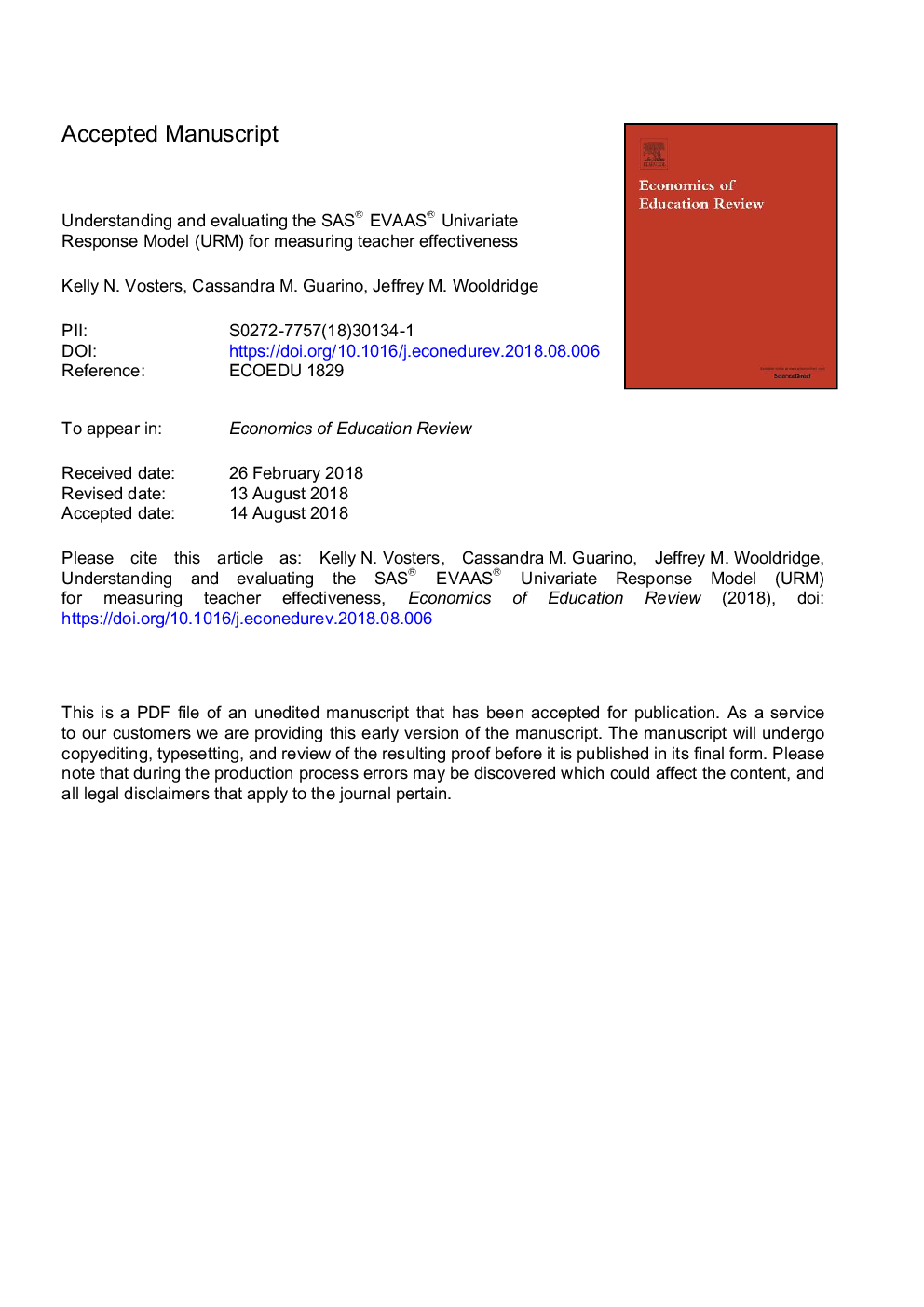| Article ID | Journal | Published Year | Pages | File Type |
|---|---|---|---|---|
| 9951969 | Economics of Education Review | 2018 | 42 Pages |
Abstract
Despite little attention or exposure in the evaluation literature, the two SAS® EVAAS®models for estimating teacher effectiveness are used by several states and districts, in some cases for high stakes policies regarding teacher tenure, retention, or incentive pay. The EVAAS approach involves using one of two distinct models, the Multivariate Response Model (MRM) or the Univariate Response Model (URM). In this paper, we discuss and illustrate advantages and disadvantages of the EVAAS URM relative to the other widely used and studied value-added methods. We perform simulations to evaluate their ability to uncover true teacher effects under various teacher assignment scenarios. We also use administrative data to illustrate the extent of agreement between the URM and other common value-added approaches. Although the differences are small in our administrative data, we show with theory and simulations that standard linear regression using OLS often performs at least as well as-and sometimes better than-the more complicated EVAAS URM.
Related Topics
Social Sciences and Humanities
Economics, Econometrics and Finance
Economics and Econometrics
Authors
Kelly N. Vosters, Cassandra M. Guarino, Jeffrey M. Wooldridge,
